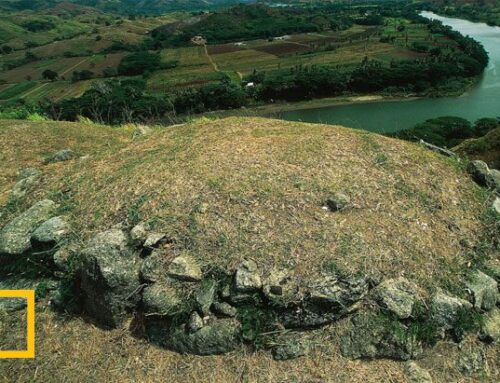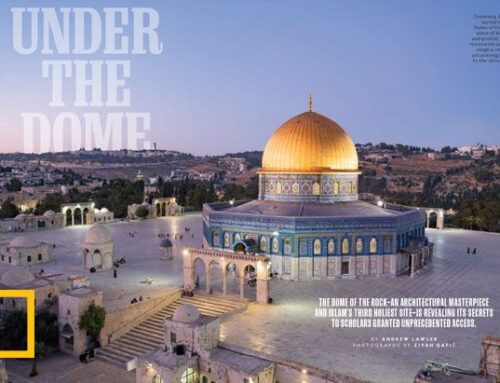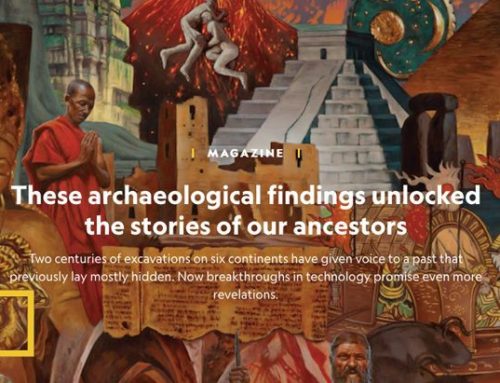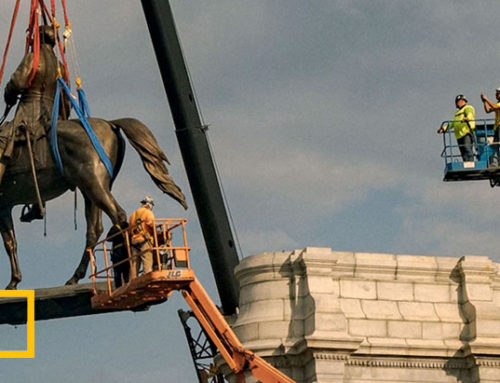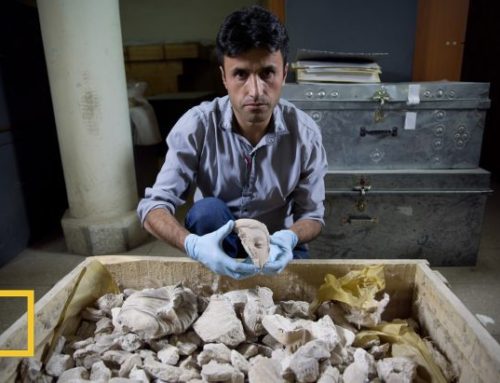Some cultural heritage experts are hopeful; others are growing anxious about the coming departure of American and European troops from the battered country.
Photographs By Robert Nickelsberg
In September, when the last NATO forces exit Afghanistan, many fear the beleaguered country could descend into another brutal civil war that ends with the collapse of the U.S.-backed government and the triumph of the Taliban. This prospect would seem a particularly grim possibility for those tasked with protecting the nation’s unusually diverse cultural heritage.
After all, the last year the Taliban were in power, in 2001, they blew up the world’s largest statues, the Bamiyan buddhas, went on an iconoclastic rampage at the National Museum in Kabul, and took part in lucrative looting of ancient sites. The unprecedented orgy of destruction, aimed particularly at pre-Islamic remains, made them international pariahs.
© NGP, Content may not reflect National Geographic’s current map policy.
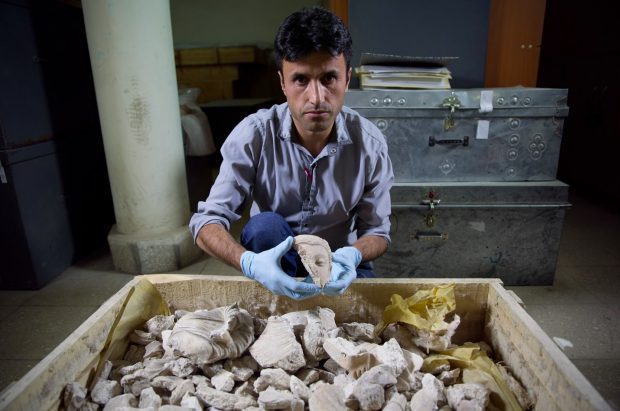
Taliban forces ransacked the National Museum of Afghanistan in early 2001, smashing images such as this Buddha head held by a curator.
Recently, however, the Taliban—which calls itself the Islamic Emirate of Afghanistan— promised to respect Afghanistan’s history. In a surprise statement, they instructed their followers to “robustly protect, monitor and preserve” relics, halt illegal digs, and safeguard “all historic sites.”
Significantly, they added that they would forbid selling artifacts on the art market. “No one should try to disturb such sites or think about using them for profit,” the statement read. The Taliban announcement was no surprise to Cheryl Benard, who directs the Alliance for the Restoration of Cultural Heritage (ARCH) based in Washington, D.C. She said her group last fall pressed both sides to address the issue.
Noor Agha Noori, who leads Afghanistan’s Institute of Archaeology, is skeptical that the Taliban have turned over a new leaf. “To be honest, we are very worried about the future of cultural heritage were the Taliban to come into power,” he says, noting that there is evidence the Islamists are still engaged in looting sites to generate revenue. (In Cambodia, evidence ties illegal antiquities trade to terrorism and violent crime.)
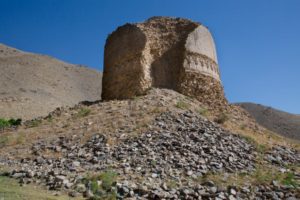
Built in the fourth century, this Buddhist shrine, or stupa, in the Parwan province of eastern Afghanistan was once a repository for sacred relics. Work has been under way to stabilize and restore the ancient structure.
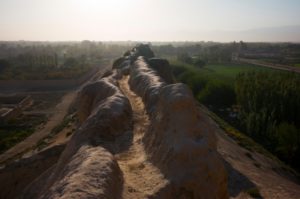
A path runs along the spine of earthen walls that once surrounded ancient Balkh, a Central Asian oasis known as the Mother of all Cities. Archaeologists have been developing a plan to preserve the walls.
Mohammad Fahim Rahimi, director of Kabul’s National Museum, is likewise wary. “Unfortunately the statement is not clear, especially concerning the pre-Islamic heritage. You know what happened to the collection during the civil war and in 2001.” It took years for museum conservators to piece together the many wooden and stone sculptures looters intentionally shattered.
Others are more optimistic that talks between the Taliban and the Afghan government will take into account the need to protect the nation’s past as part of any peace deal. In December, government officials agreed to discuss “ensuring the security of historical and Islamic sites” during negotiations, and the February statement signals a willingness by the Taliban to engage on the hot-button issue.
“It’s a great and positive step,” said Nasratullah Hewadwall, who represents the Kabul branch of ARCH. He noted that the Islamist group last year repudiated the 2001 destruction of the Bamiyan buddhas. Others have blamed the action on al Qaeda and its extreme brand of Islam that opposes art reproducing human or animal forms.
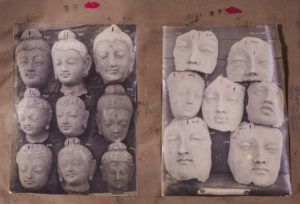
Photographs taken in the 1920s document clay Buddha heads and molds discovered a century ago by French archaeologists. Though now almost entirely Muslim, Afghanistan was once an important center of Buddhist teaching, art, and missionary activity.
Now, he said, the Taliban leadership appears to grasp both the economic importance of ancient sites as potential tourist draws, as well as the public relations pitfalls of wanton destruction.
There remains much to be lost. As the geographical crossroads of Central Asia, Afghanistan has drawn merchants, pilgrims, and armies since Alexander the Great arrived and married an Afghan princess.
Here, Buddhism spread to China, while Zoroastrianism, Christianity, Judaism, and Hinduism flourished before and after the arrival of Islam in the seventh century A.D. As a major artery on the Silk Road connecting India with Iran and China, Afghanistan is strung with remains of ancient cities, monasteries, and caravanserais that housed travelers—including Marco Polo on his way to the glittering court of Kublai Khan.
The specter of chaos
Cultural heritage experts may be divided over the Taliban’s sincerity, but they agree that chaos, rather than an Islamist takeover, poses the greater danger.
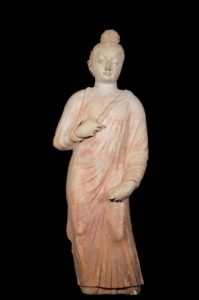
A standing Buddha sculpted out of clay, now in the Presidential Palace, reveals influences from India as well as Greece.
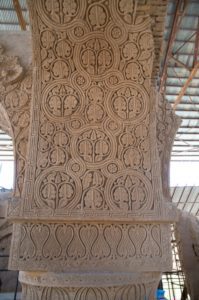
Intricate stonework adorns the ruins of the eighth-century Noh Gunbad Mosque, Afghanistan’s oldest Islamic structure. A roof has been built to protect the vulnerable ruins.
“Our fears are less about a possible threat posed by the Taliban than the prospect of a breakdown in law and order,” said Jolyon Leslie, a preservationist currently working to shore up an ancient Buddhist stupa outside Kabul. He has worked to involve local communities that are better placed to protect such monuments.
Hewadwall argues that chaos already prevails, particularly in rural regions. A lack of security and constantly shifting alliances have enabled looters—whether poverty-stricken villagers, roving gangs, Taliban, or various militia—to pilfer artifacts that then are smuggled to art market hubs like Dubai. Buddhist sites, often packed with highly valuable statues, have been particularly hard hit. (See 20 of the world’s most beautiful Buddhist temples.)
Despite fears of a Taliban-dominated regime, the United States last month returned to Afghanistan over 33 artifacts worth an estimated $1.8 million. The objects had been stolen in the past decade and were part of an extensive collection owned by a New York art dealer.
“These recovered works are irreplaceable pieces of Afghanistan’s diverse culture and rich history,” said Afghan Ambassador Roya Rahmani at the repatriation ceremony in New York. “It is my greatest honor to help facilitate their return home.”
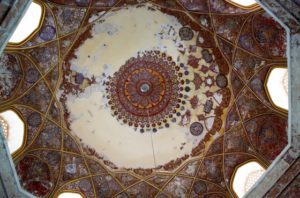
The richly decorated dome of Shahzada Abdullah tomb in Herat, a city close to the Iranian border, has been stabilized and conserved in recent years.
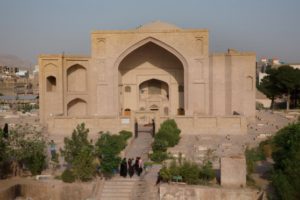
Herat was one of Central Asia’s grandest cities in the 16th century, boasting elegant shrines such as this one dedicated to Shahzada Abdullah.
Will they survive the coming years? Fredrik Hiebert, a National Geographic archaeologist who helped identify the artifacts, said that he is confident that Afghan officials, who often braved arrest and even death to protect sites and museums during the last Taliban regime, are more than capable of keeping the nation’s ancient past secure. “They will be good caretakers,” he said. “I have total confidence in them.”
New attack raises fears
Three days after the New York ceremony, Taliban forces ambushed and killed several government soldiers guarding Mes Aynak, an ancient Buddhist complex outside the capital. The site includes a warehouse originally containing some 8,000 Buddhist artifacts, Noori says. Given the lack of security, officials already had transferred some 3,000 of those artifacts to the safety of the National Museum. (Here are the cultural heritage sites the world could lose in an Iran conflict.)
But Noori adds that a few archaeological excavations continue around the country, including an Afghan-French dig at Kabul’s citadel. In March, the Ministry of Information and Culture announced that, with support from Turkey, it had begun to rebuild the birthplace of the 13thcentury poet Rumi in the northern city of Balkh.
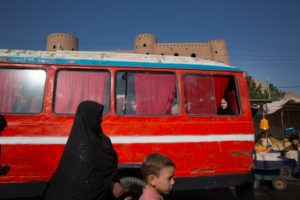
Towering above Herat’s old city market, the Citadel served for centuries as a fort, palace, treasury, arsenal, and prison. Today, after restoration work supported by the U.S. Embassy and others, it houses a museum.
“Once lasting peace comes to our country, we are eager to share this heritage with the world,” said Murtaza Azizi, a senior ministry official. “We hope our tourism industry—and with it, the economy—will grow, not only in Balkh, but all over Afghanistan.”
Whether the nation’s threatened cultural heritage can emerge from the current crisis largely intact is ultimately not just a matter of protecting ancient objects and buildings, said Omar Sharifi, head of the American Institute of Afghanistan Studies at Boston University. “This is about our preservation of our people.”
Andrew Lawler is a journalist and author who has written about controversial excavations under Jerusalem for National Geographic. His latest book, Under Jerusalem, will be published in November.
Robert Nickelsberg worked as a Time magazine contract photographer for nearly 30 years, specializing in political and cultural change in developing countries. He is the author of Afghanistan – A Distant War, published in 2013 by Prestel, which represents his 25 years of work in Afghanistan. Nickelsberg’s latest book, Afghanistan’s Heritage: Restoring Spirit and Stone, done in conjunction with the U.S. Department of State, was published in English, Dari, and Pashtu in May 2018.
